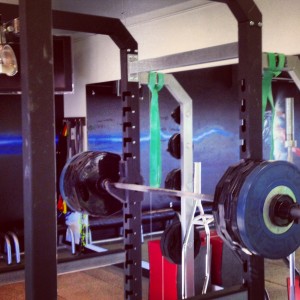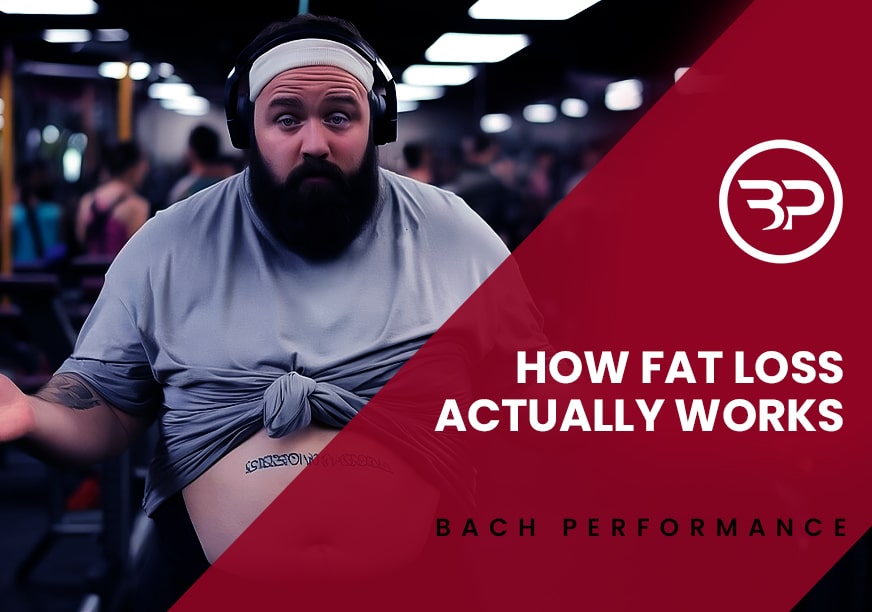Why You are Weak: 6 Reasons and How to Fix them
April 8, 2014
Being weak is something I refuse to experience ever again. At 14 years old a whopping 5’3″ 103lbs and playing freshman football. Apparently, 14 was the age when my friends “decided to grow” and I was content being a blonde-haired baby-faced munchkin.
I was sprinting down the field on a kick-off and positioning to make a tackle. I thought, “Why is he sprinting directly at me with the entire field open?” As it turns out I happened to be the path of least resistance. Boom. I got trucked.
I’ve never been a big guy, I stand 5’9″ 180lbs, but never, ever, did I feel as helpless and weak as that moment. Although much of it was a matter of maturation, running through me was easier than running to open space.
I was vulnerable, I was weak, and I provided less resistance than a blade of grass.
I left that practice asking myself “Why are you weak? How can you get better?” From that moment on I refused to ever be weak again. To get strong you must train ferociously, consistently, and intelligently–these six tips are essential to building appreciable levels of strength, providing a great foundation for athletic success and fully functional athletic-muscle.
1.You’re using too many exercises
Strength doesn’t require 6 different exercises and 18 total sets per muscle group. Spend your spent mastering the basics exercises: squats, rows, pull-ups, presses, deadlifts, cleans, and lunges.
Variety might be the spice of life, but it doesn’t get you strong. Cosmetic benefits may be available with more angles and variety, but that shouldn’t happen every workout. Perform exercises for at least three weeks before changing exercises; otherwise, adaptation won’t have time to occur and you’ll limit your results.
2.You don’t de-load your training
Without cycling training and using deloads you’ll end up weak, injured, and small.
Why? For adaptation and growth super-compensation must take place.
Super compensation is the body recovering from stress (training) and coming back stronger to handle a greater level of stress. Without backing off super compensation won’t happen, negating your gym efforts. Read more about the adaptation process HERE.
Be smart, train hard with increasing intensity, then take some time off and focus on recovery.
3.You only train with low reps
I love hittin’ heavy doubles, triples, and singles on lifts, but doing only that will leave your broken body. It’s imperative to include higher rep exercises from 8-20+ reps per set to continue building muscle and strength while preventing imbalances. Exercises like chin-ups, sled work, push-ups, rows, lunges, and unilateral exercises are fantastic options to de-load the joints while challenging the body to grow.
4.You’re not warming up
Intense exercise without a thorough warm-up is a recipe for injury. The best athletes use the warm-up to prepare mind & body, address weak points, and rev up the nervous system. Focus on dynamic exercises that activate key muscles such used in activity while emphasizing proper positioning and core engagement.
Warm-ups should incorporate active stretching techniques, sport-specific movements, and neural activation exercises. These modalities are performed to mimic the movement-specific demands of the activity, address movement deficiencies, increase core and ligament temperature, stimulate the nervous system, increase stability, and activate proprioceptors (Yauss and Rotchstein, 2011). Match your warm-up to the key movement patterns and muscles that will be trained during your session.
Eric’s recommendation: Do this warm-up every day.
Your warm-up doesn’t need to be complicated, but it can’t be neglected.
5.)You’re training muscles, not movements
Strength training consistently and achieving progressive overload with basic movement patterns is the best way to develop a strong strength base. The most crippling problem for beginners is isolating each muscle group rather than training compound, multi-joint movements.
You have limited time and energy to dedicate to training and picking the right exercises is imperative to getting results. Biceps curls, lateral shoulder raises, and hamstring curls aren’t bad, but they shouldn’t make up the majority of your program. Isolation exercises only focus on a small part of the body and won’t provide the overload necessary to transform your strength and athleticism.
There are seven human movements patterns, but for the scope of this article I will cover five: Squat, hinge, lunge, push, and pull. The list below has each movement pattern and corresponding exercises to form the base for good programming.
Hinge and extend: deadlift (all variations), good morning, kettlebell swings, power clean
Lunge: lunge, split squat, step back lunge, bulgarian split squat
Push: bench press, push-up, overhead press, jerk, one arm presses
Pull: pull-up, bent-over row, seated row, one arm row
Squat: Front squat, goblet squat, zercher squat, back squat
These exercises require muscles working at multiple joints to perform with coordinative movement, just like in sport and life. Majoring in the minors is a sure-fire way to stay small, weak, and injury prone, emphasize the major movement patterns rather than muscles to build impressive strength.
6.You haven’t maximized available Recovery Methods
The strongest athletes understand the importance of recovery. As such they spend significant time using recovery methods like stretching, hot/cold treatments, foam rolling, massage, and other soft-tissue methods to increase flood flow, nutrient delivery and improve tissue quality. Small injuries happen, but attacking recovery with the same intensity you attack the weight prevent these injuries from manifesting into something major.
You can train hard, but that’s not enough. Long-term training requires persistent effort and a smart, well-planned approach to work.
Wrap Up
Strength builds a great foundation for all other qualities, allowing you to train at higher relative intensities, improve power, and build a resilient body. It isn’t overly complicated, but it requires passion, consistent hard-work, and self-discipline over an extended period of time. The work, passion, and discipline are up to you but adhere to these tips you’ll be on your way to building a body that is strong, shredded, and athletic.
P.S.
Want to simplify muscle building with done for you workouts and muscle building meal plans?
Yauss, B. and Rotchstein, A. (2011). The acute and chronic benefits of movement prep for the soccer athlete. NSCA’s Performance Training Journal, 10, 3, 1116.








